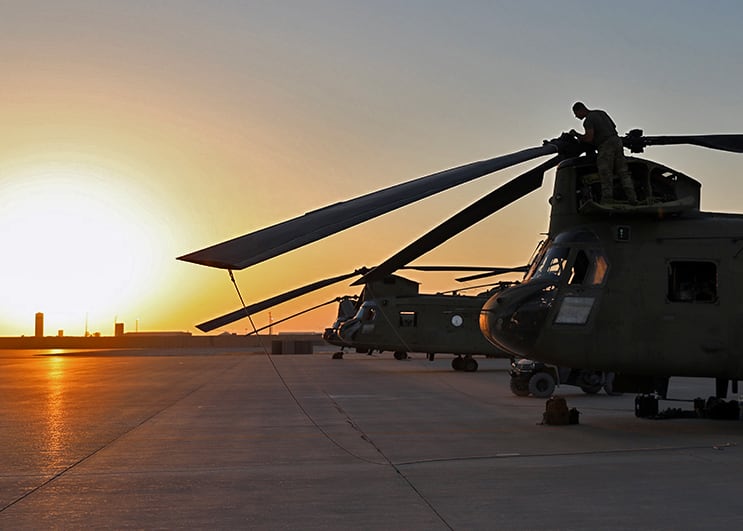A major Iranian-backed militant group in Iraq warned Wednesday it may strike additional U.S. targets after U.S. warplanes killed multiple militants in response to the first use of short-range ballistic missiles against U.S. forces at Al-Asad Air Base earlier this week.
U.S. fighter jets struck a Kataib Hezbollah operations center and a Kataib Hezbollah command and control node near Al Anbar and Jurf al Saqr, south of Baghdad, on Tuesday, two defense officials said, speaking on condition of anonymity to provide additional sensitive details of the attacks.
There were Kataib Hezbollah personnel at both sites at the time of the strikes, but the officials said they could not yet confirm whether anyone there was killed.
Militia officials in Iraq said the attack had killed eight Kataib Hezbollah members.
The U.S. airstrikes followed an initial retaliatory strike by an AC-130 gunship that was in the air when the Iranian-backed militants fired two short-range ballistic missiles at Al-Asad Air Base in Iraq late Monday evening. The gunship was able to locate the origin of the missiles, and fired on several militants who had fled in a vehicle, killing several of them.
Kataib Hezbollah in a statement meanwhile said it was considering “expanding the scope of targets” if the U.S. military continues with its strikes, adding that the attack “will not go unpunished”.
The dangerous back-and-forth strikes have escalated since Iranian-backed militant groups under the umbrella group called the Islamic Resistance in Iraq and Syria began striking U.S. facilities Oct. 17, the date that a blast at a hospital in Gaza killed hundreds. The attacks have continued unabated since, with at least 66 rocket and missile attacks hitting U.S. facilities and wounding at least 62 service members.
The Monday attack stood out in that it was the first time militants had used ballistic missiles, and the U.S. response inside Iraq was immediate.
It was also noteworthy because the previous planned counterattacks by U.S. warplanes had focused on militant weapons caches and training centers in Syria, due to political sensitivities in Iraq.
The office of Iraqi Prime Minister Mohammed Shia al-Sudani, who rose to power through the backing of an Iran-backed political coalition, called the recent escalations “a dangerous development,” reflecting the delicate balance the government must strike between Iranian factions and U.S. military presence.
In a statement, Sudani’s office called the the U.S. attack a violation of the country’s sovereignty and of the U.S.-led coalition’s mission to combat Islamic State militants on Iraqi soil, given that the attack was done without giving Iraq notice. Over the past month however, the Iraqi premier has also called for the authorities to pursue the attackers of U.S. bases in Iraq, as he tries to maintain a delicate balance in maintaining positive ties with both Washington and Tehran.
On Tuesday evening, U.S. officials speaking on background said the U.S. is trying to communicate that it does not seek wider conflict, but that the Iran-backed attacks against American forces must stop and that the U.S. will take further action if needed. The U.S. has moved considerable assets to the region — two carrier groups, multiple squadrons of warplanes and U.S. personnel to try and dissuade factions from turning the crisis between Israel and Hamas into a regional war.
It’s not the first time the U.S. has taken significant action against Kataib Hezbollah. Iin 2020 a series of Kaytusha rocket attacks by Kataib Hezbollah against Camp Taji in Iraq killed three service members — two Americans and a British soldier — and seriously wounded several others. In response the U.S. conducted two rounds of airstrikes taking out multiple weapons facilities.
Kareem Chehayeb reported from Beirut. Qassim Abdul-Zahra contributed to this report from Baghdad.
Tara Copp is a Pentagon correspondent for the Associated Press. She was previously Pentagon bureau chief for Sightline Media Group.





